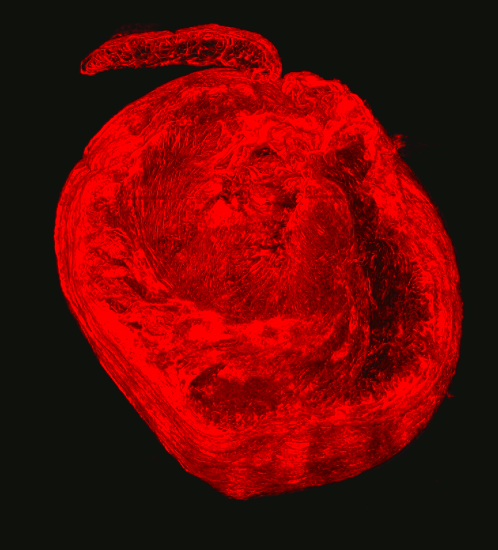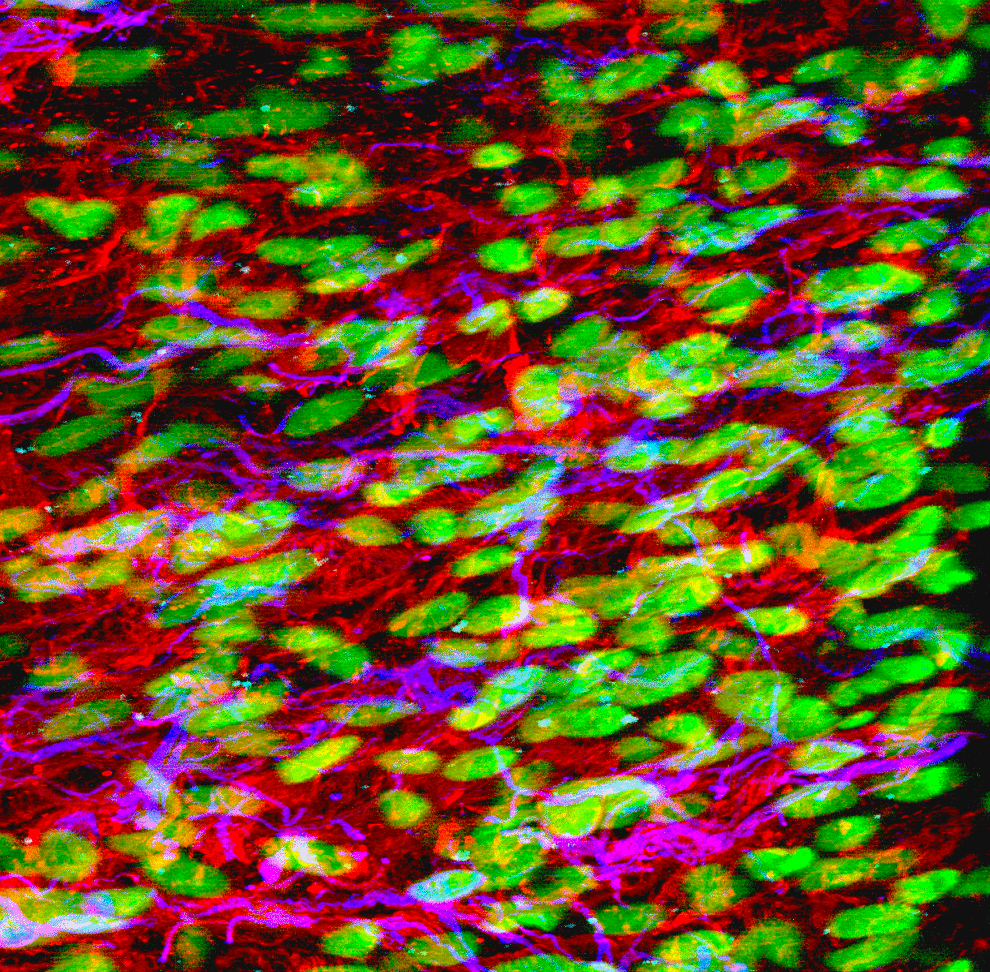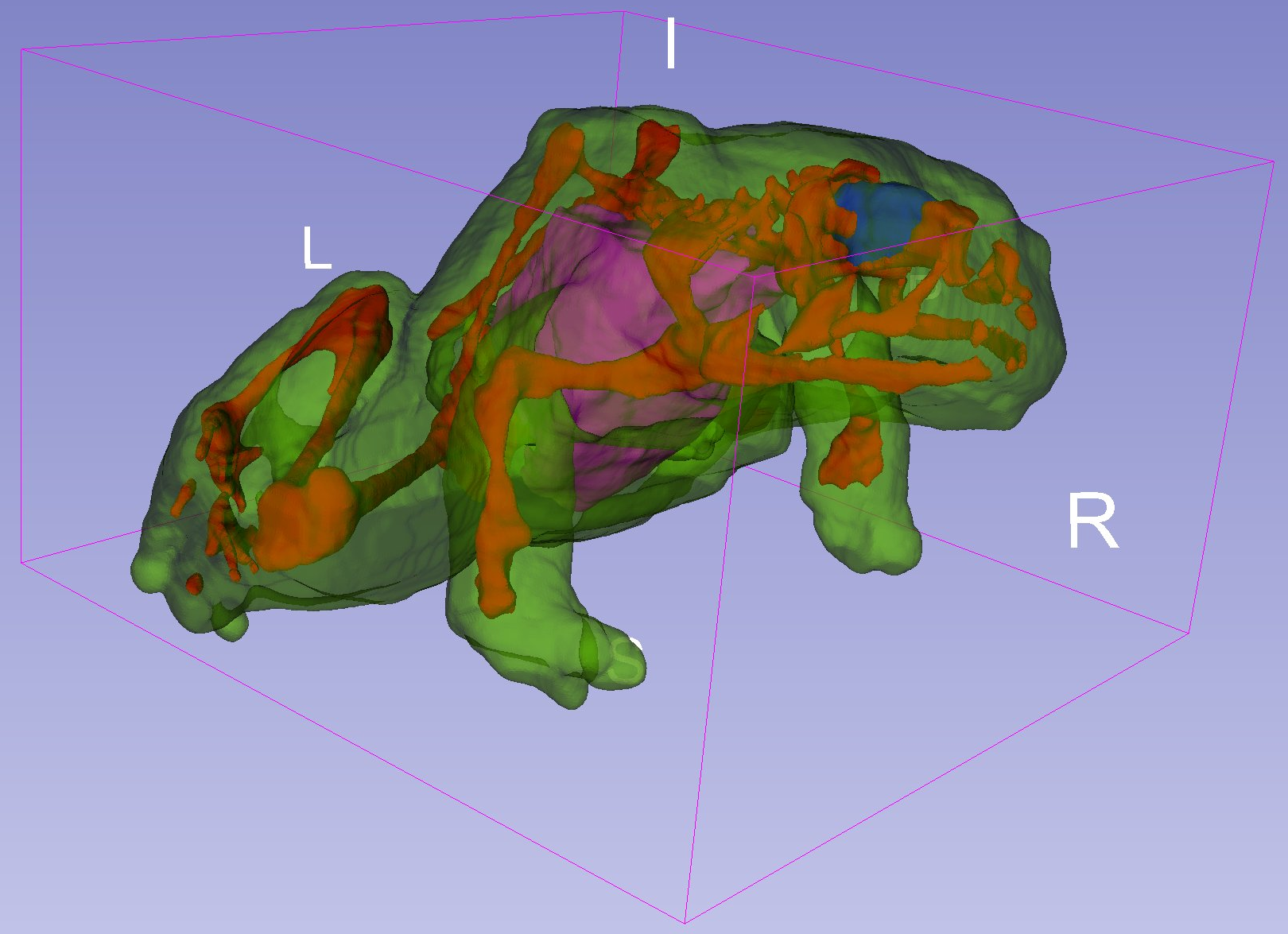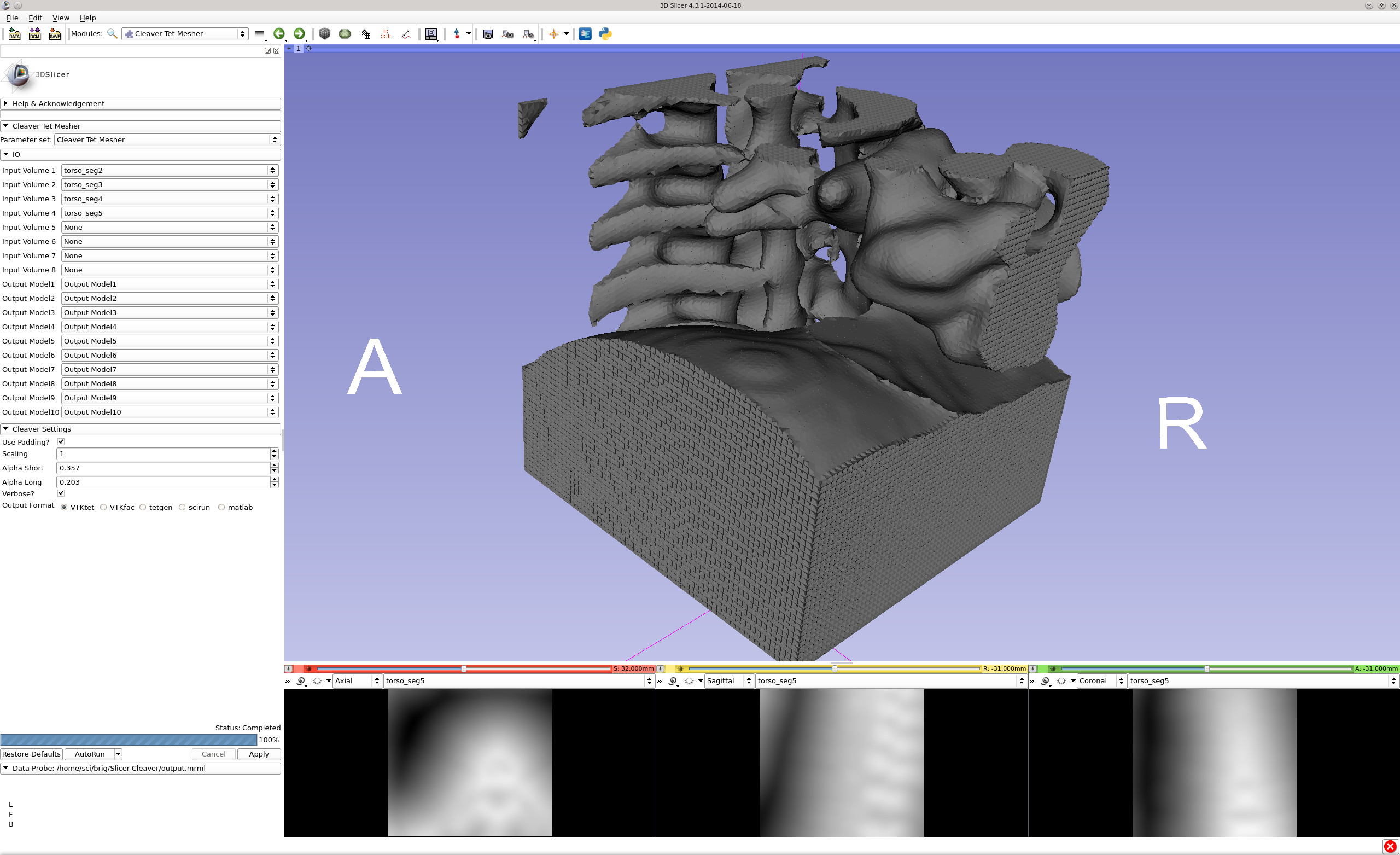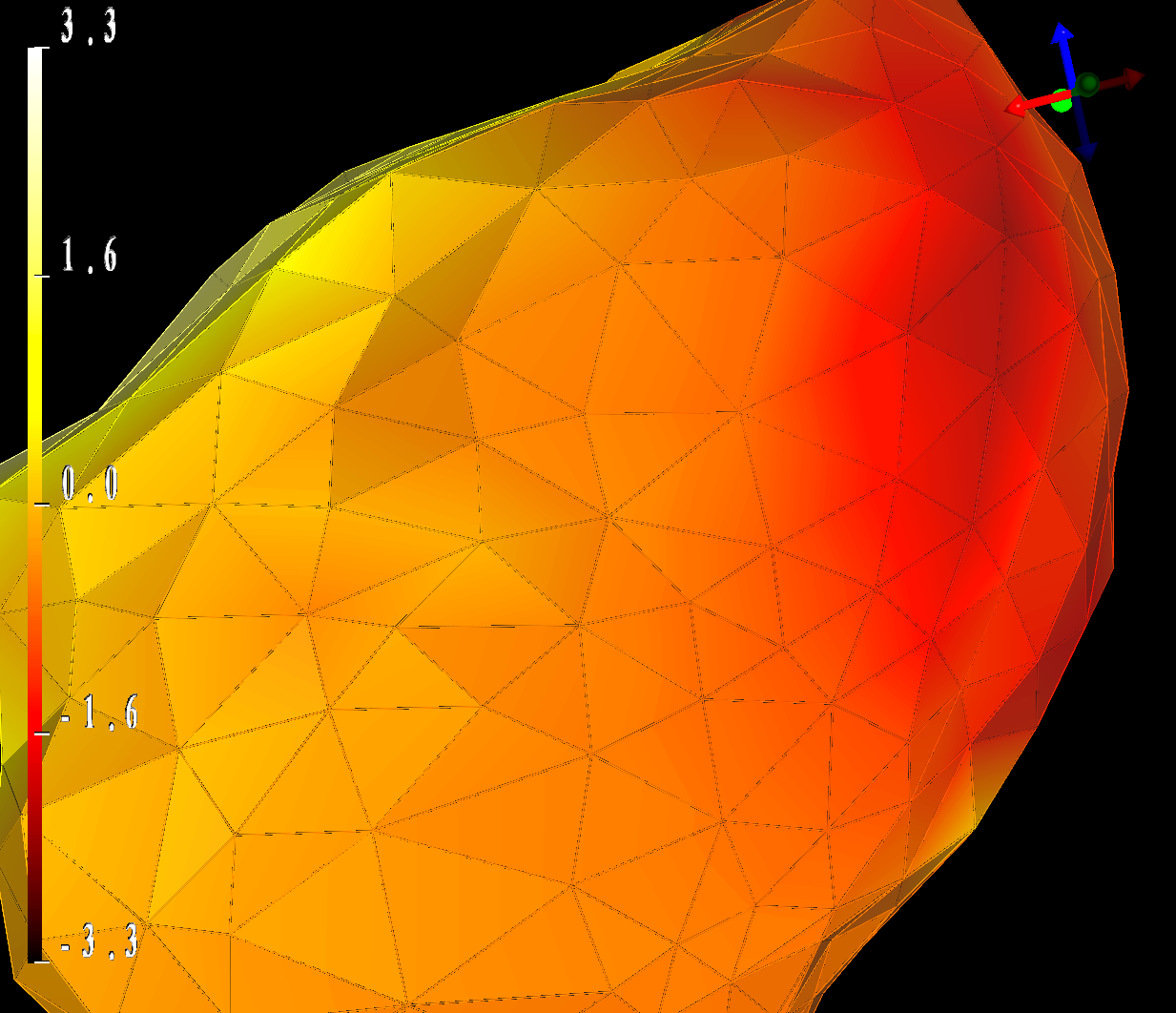April 26, 2014
Brig Bagley is a Research Software Engineer for the Scientific Computing and Imaging (SCI) Institute at the University of Utah. Brig received his BS in Computer Engineering at California Polytechnic University (Cal Poly) at San Luis Obispo in June 2011. Following, he received his MS in Computing : Robotics at the University of Utah in December 2013. Brig began his work at the SCI Institute in January of 2014.
Below are brief descriptions of the projects Brig has worked on. You can find links to binaries and repositories on the left.
If there are problems with binaries or you wish to contribute to a repository, please contact Brig here.
April 26, 2014

FluoRender is an interactive rendering tool for confocal microscopy data visualization. It combines the renderings of multi-channel volume data and polygon mesh data, where the properties of each dataset can be adjusted independently and quickly. The tool is designed especially for neurobiologists, and it helps them better visualize the fluorescent-stained confocal samples.
Improvements
- TIFF File compatibility with multi-channel.
- Git and CMake integration.
- Porting to OSX Mavericks platform.
- Movie creation options in MOV format.
- Several GUI improvements, including icons, organization, and loook-and-feel.
- Several major and minor bug fixes as they arise.
FluoRender Webpage
http://www.sci.utah.edu/cibc-software/fluorender.html
April 26, 2014

The Cleaver Library is based on the 'Lattice Cleaving' algorithm.
The method is theoretically guaranteed to produce valid meshes with bounded dihedral angles, while still conforming to multimaterial material surfaces. Empirically these bounds have been shown to be significant.
Improvements
- Reduced memory footprint and improved efficiency.
- Simplified data structures and calculations.
- Transition mesh only creation.
- Integration of improvements in Cleaver2 GUI
- Integration of Cleaver1 into 3DSlicer
- Improvements and Release of Cleaver 2
Cleaver Webpage
http://www.sci.utah.edu/cibc-software/cleaver-cibc.html
November 26, 2014
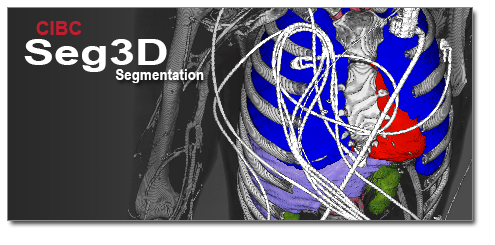
Seg3D is a free volume segmentation and processing tool developed by the NIH Center for Integrative Biomedical Computing at the University of Utah Scientific Computing and Imaging (SCI) Institute. Seg3D combines a flexible manual segmentation interface with powerful higher-dimensional image processing and segmentation algorithms from the Insight Toolkit. Users can explore and label image volumes using volume rendering and orthogonal slice view windows.
Improvements
- Added a python script within the python terminal that takes hints as strategies for
organizing, matching, and mosaicing tiles for slices of a volume. Assembled slices can then
be matched in the z-direction to create a 3-d volume of slices for volume-rendering.
Seg3D Webpage
http://www.sci.utah.edu/cibc-software/seg3d.html
March 3, 2015
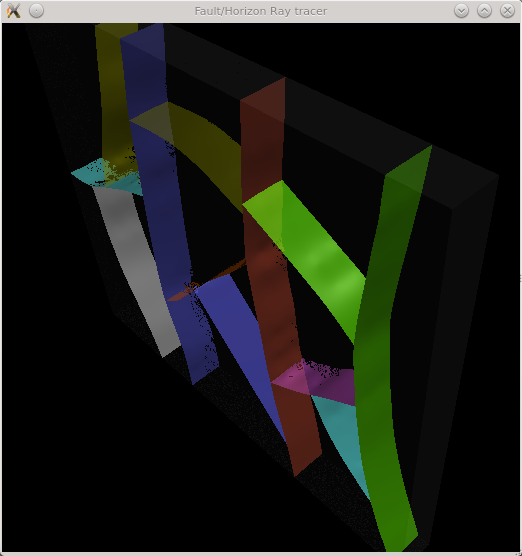
This project was developed completely from scratch, minus the math used to
decipher the RBF trees, provided by
Shankar. A tree configuration of horizons and
faults is read in and visualized using ray-tracing techniques across the several
Radial Basis Functions (RBFs) to determine surfaces. The PI wishes to have
real-time interactive functions with the RBFs, including regular interaction and
tranformations of the RBFs, such as translations. See the demo by clicking the image above.
Features
- Using GLSL (GPU), RFBs are ray-traced using 3 root-finding methods (
Newton's method, Affine Arithmatic, and a blend of the two.
- Parameters of each root-finding method can be altered in the GLUI user
interface.
- RBFs can be selected with the GUI or by double-clicking on them. The
RBF flashes, indicating selection. Then the GUI provides tranlations in all
3 XYZ dimensions.
- Surfaces can either be opaque (faster) or transparent (slower)
- To further speed interaction, surfaces can be approximated as planes.
- Even further increased interaction speed option does not render the
RBFs during interaction, only the bounding box.
- RBFs and scene transformations can be reset.
March 3, 2015
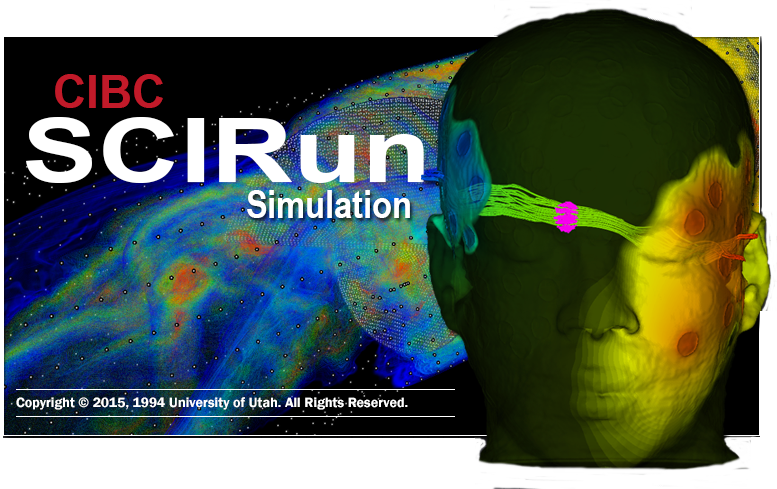
SCIRun is a problem solving environment or "computational workbench" in which a user selects software modules that can be connected in a visual programing environment to create a high level workflow for experimentation. Each module exposes all the available parameters necessary for scientists to adjust the outcome of their simulation or visualization. The networks in SCIRun are flexible enough to enable duplication of networks and creation of new modules.
Improvements
- Rendering of Bounding Box
- Transparency fixes within GLSL shaders.
- Creation and rendering of various colormaps, including the color map scale bar.
- Rendering of font text for the scale bar.
- Scale bar re-scaling options.
- Rendering edges as cylinders and nodes as spheres.
SCIRun Webpage
http://www.sci.utah.edu/cibc-software/scirun.html
April 30, 2015

The goal of this work is to develop, test, document and distribute a collection of software tools for efficiently solving several classes of equations of H-J type - in particular, Eikonal (minimal path) equations and level-set equations - on unstructured (triangular and tetrahedral) meshes using commodity streaming architectures. As the project progresses, we will add additional PDE-based solvers (and support code) that require similar combinations of unstructured mesh methods (e.g. FEM) and the use of streaming architectures.
Improvements
- Cross-platform compatability with CMake and CDash.
- Testing using gtest.
- Release of library and eaxmples for all solvers.
GPUTUM Webpage
https://www.sci.utah.edu/software/gputum.html
